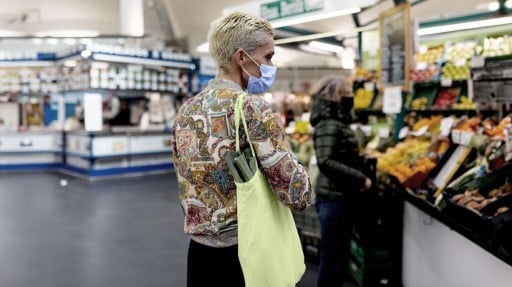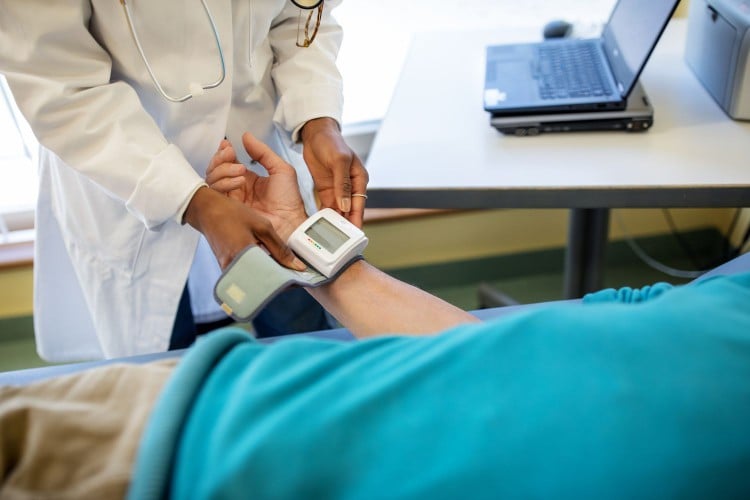
- Researchers are reporting that hormonal changes related to menopause and hormone replacement therapy may increase the risk of developing rheumatoid arthritis.
- Women who have more than four children could also have a higher risk of developing the painful condition.
- Researchers note that women are two to three times more likely to develop rheumatoid arthritis, which could explain why estrogen may be involved in raising the risk.
Having four or more children, developing early menopause, and getting hormone replacement therapy are some factors that might contribute to the development of rheumatoid arthritis in older women.
That’s according to a new study published in the journal RMD Open.
Researchers collected data from 223,526 women who were UK Biobank participants. The scientists looked at information on hormonal and reproductive factors related to rheumatoid arthritis.
They reported that a number of factors increased the risk of developing rheumatoid arthritis, albeit to different degrees.
The scientists followed the women for an average of about 12 years. During that time, 3,313 (1.5%) developed rheumatoid arthritis.
Specifically, the scientists found the following results:
Pregnancy and the number of children
There wasn’t a significant difference between women who had been pregnant and those who had not.
However, researchers said there was an association between the number of children and rheumatoid arthritis risk.
The scientists reported that women who had four or more children were at higher risk of developing the disease.
Age at first period
The researchers used 13 as the reference age of the first period.
They found that women who were 12 and younger or older than 14 had a higher risk of developing rheumatoid arthritis.
However, those over age 14 had a more substantial risk than those who were younger than 12.
Menopause-related risk factors
The researchers reported that women who were older and had longer childbearing years had a greater risk of developing rheumatoid arthritis.
Postmenopausal women were also at a higher risk.
The number of years between the first period and menopause are reproductive years. Women who had less than 33 years between the two stages had a higher risk of rheumatoid arthritis.
The researchers also found that women who had a hysterectomy or oophorectomy had a higher risk.
Exogenous hormone use
The scientists did not find a direct link between oral contraceptives and rheumatoid arthritis.
However, they reported an association between the length of time the women took the contraceptives compared to those who had never used them.
Reaction to the rheumatoid arthritis risk study
“[This is] a fascinating and novel study exploring the relationship between the hormonal milieu and the development of RA (rheumatoid arthritis),” said Dr. Kecia Gaither, an OB/GYN and a specialist in maternal fetal medicine as well as the director of Perinatal Services/Maternal Fetal Medicine at NYC Health + Hospitals/Lincoln in the Bronx.
“It is well known that women are two to three times more likely to develop this disease over men, so that fact that estrogen may inherently be involved lends credence to the observation,” Gaither, who was not involved in the study, told Medical News Today.
“However, there are a myriad number of risk factors related to RA development besides sex,” she added. “Obesity, prior joint damage, periodontal disease, tobacco abuse, stress, and low socioeconomic status (which has stress as an underlying denominator).”
Tailoring treatment for rheumatoid arthritis
Rheumatoid arthritis can show up differently in women than in men, according to the
For example, some people can have a few stiff joints with mild inflammation. Another person might have additional inflamed joints.
Triggers can also be different. One person might find viral infections cause a flare of symptoms. Another might see the condition develop with stress.
Experts say these differences mean physicians should tailor treatment to individuals.
“For some women, when they are faced with menopause and the loss of hormones, specifically estradiol, they may see a rise in RA symptoms,” said Dr, Michael Krychman, an OB/GYN and the medical director of Women’s Health Services at MemorialCare Saddleback Medical Center in California.
“It is important for [healthcare professionals] to look at the complete picture, and while data is confusing and there may be some conflicting results (some studies show no exacerbation of RA symptoms during menopause), it remains important to practice precision and tailor a woman’s specific health plan to her global symptoms,” Krychman, who was not involved in the study, told Medical News Today.
“I think this information can be utilized to have more cogent discussions with patients, particularly those who have a family history of RA and have other associated risk factors,” Gaither said. “Referral to a rheumatologist, given the parameters noted in the study and with family history and other noted risk factors, would be a prudent course of action.”
However, a referral isn’t the end of the process.
“The importance of collaboration and data review is essential when you have a chronic medical condition such as RA,” said Krychman. “As a women’s health menopausal expert, I collaborate and work closely with my patient’s rheumatologist to tailor her hormone therapy and analyze her symptoms.”








